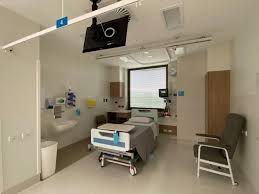Odour control is a critical consideration in healthcare settings, particularly in high-dependency units (HDUs) where elderly residents require constant care and attention. Adelaide’s high-dependency units serve as vital hubs for elderly care, providing a safe and comfortable environment for residents. However, maintaining a pleasant and healthy living atmosphere in these facilities can be challenging due to various factors, including the unique needs of elderly populations and the potential for odours caused by medical treatments, hygiene practices, and shared spaces.
In this article, we will explore the importance of elderly-friendly odour control in Adelaide’s HDUs and outline 10 essential qualities that make a significant difference in the well-being of residents, staff, and visitors. We will also provide local context, such as Adelaide’s unique climate and specific challenges faced by care facilities in the region, to enhance the article’s relevance and SEO appeal. Whether you’re a caregiver, facility manager, or simply someone interested in improving care standards, this guide will provide valuable insights into creating a more comfortable and odour-free environment for elderly residents.
1. Professional Odour Control Services
Professional odour control services are a cornerstone of maintaining hygiene and comfort in high-dependency units. These services employ advanced techniques to eliminate unpleasant smells and prevent their recurrence. For example, specialised cleaning companies in Adelaide, such as those providing expertise in odour control, can tailor their solutions to meet the specific needs of elderly care facilities. By using biodegradable enzymes and non-toxic solutions, these services ensure a safe and chemical-free environment for residents and staff.
For instance, consider an HDU in Adelaide’s northern suburbs, where residents are highly sensitive to environmental factors. A professional odour control service can identify the source of odours, such as spills or improperly ventilated areas, and implement targeted solutions. This proactive approach not only improves air quality but also enhances the overall well-being of residents, contributing to a more positive care experience.
2. Customised Solutions for Elderly Care
Every high-dependency unit has unique requirements when it comes to odour control. elderly-friendly solutions must take into account factors such as mobility limitations, sensory sensitivities, and the presence of medical equipment. Customised odour control solutions are designed to address these specific challenges, ensuring that the environment remains comfortable and safe for all residents.
In Adelaide, care facilities in areas like Epping and other suburban neighbourhoods often face issues related to seasonal changes and humidity. Customised solutions can include the use of air filtration systems, dehumidifiers, and non-intrusive cleaning products that cater to the needs of elderly residents. By tailoring odour control measures to the facility’s unique environment, care providers can create a more inviting and healthier space for residents.
3. Use of Non-Toxic and Gentle Products
The health and safety of elderly residents are paramount, which is why non-toxic and gentle cleaning products are essential in HDUs. These products are designed to eliminate odours without exposing residents to harmful chemicals. Organisations offering training in environmental safety often highlight the importance of using eco-friendly solutions in healthcare settings.
For example, a facility in Adelaide’s city centre might opt for enzymatic cleaners that break down organic matter, effectively removing odours caused by spills or bodily fluids. These products are not only effective but also safe for use around elderly residents, ensuring their well-being while maintaining a clean and odour-free environment.
4. Advanced Odour Detection Technology
Modern odour detection technology plays a crucial role in maintaining high standards of hygiene in HDUs. These technologies can identify the presence of unpleasant smells long before they become noticeable, allowing staff to address the issue proactively. In Adelaide, care facilities in areas like Port Adelaide and Elizabeth benefit from such innovations, ensuring that residents are always comfortable.
Imagine a scenario where a high-dependency unit uses sensors to monitor air quality in real-time. These sensors can detect even the slightest traces of odours and alert staff, enabling them to take immediate action. This technology not only prevents potential discomfort for residents but also reduces the risk of health issues arising from poor air quality.
5. Regular Maintenance and Cleaning
Regular maintenance and cleaning are fundamental to effective odour control in any healthcare setting. A consistent cleaning schedule ensures that potential sources of odours are addressed before they become problematic. In Adelaide, care facilities in areas like Semaphore and Morphettville often rely on professional cleaning services to maintain a high standard of cleanliness.
For instance, a facility in Semaphore might implement a daily cleaning routine that includes sanitising surfaces, emptying waste bins, and refreshing air quality. This approach not only prevents odours from developing but also contributes to a more hygienic and welcoming environment for residents and staff alike.
6. Training for Care Staff
Proper training for care staff is essential for effective odour control in high-dependency units. Staff members who are well-informed about the best practices for maintaining hygiene and eliminating odours can significantly improve the overall quality of care. Training programs, such as those offered by specialised health courses, often emphasise the importance of cleanliness in healthcare settings.
For example, a training session in Adelaide’swestern suburbs might focus on the use of eco-friendly cleaning products, proper waste disposal techniques, and the importance of regular ventilation. Equipping staff with this knowledge ensures that they can proactively address odour issues and maintain a comfortable environment for residents.
7. Emphasis on Ventilation
Proper ventilation is a key factor in preventing and controlling odours in high-dependency units. Effective ventilation systems ensure that fresh air circulates throughout the facility, reducing the likelihood of unpleasant smells. In Adelaide’s maritime climate, where humidity can sometimes contribute to odour issues, adequate ventilation is particularly important.
A facility in Adelaide’s southern suburbs, such as Port pirate, might implement a ventilation system that regulates humidity levels and promotes air circulation. This not only helps to prevent odours but also supports the overall health and comfort of residents, especially those sensitive to environmental conditions.
8. Regular Waste Management
Efficient waste management is another critical component of odour control in HDUs. Proper disposal of waste materials prevents the build-up of odorous substances and contributes to a cleaner, healthier environment. In Adelaide, care facilities in areas like Tea Tree Gully and Darnhurst often work with waste management companies to ensure that their waste disposal practices are both effective and environmentally friendly.
For instance, a facility might adopt a colour-coded waste management system to segregate different types of waste, such as general waste, recycling, and hazardous waste. This approach not only simplifies the disposal process but also reduces the risk of odours developing in the facility.
9. Resident-Centric Approaches
A resident-centric approach to odour control ensures that the needs and preferences of elderly residents are always prioritised. This involves creating a comfortable environment that respects the residents’ sensitivity to气味 and overall well-being. In Adelaide, care facilities in areas like Firle and Balhannah often focus on providing individualised care, including tailored odour control measures.
For example, a facility might offer residents the option of using scented candles or air fresheners to create a more pleasant atmosphere. However, care must be taken to ensure that these products do not contain harmful chemicals or overpowering fragrances that could cause discomfort to elderly residents.
10. Continuous Improvement and Innovation
Finally, continuous improvement and innovation are essential for maintaining high standards of odour control in high-dependency units. As technology and best practices evolve, care facilities must stay updated on the latest developments in odour control to provide the best possible care for residents. In Adelaide, care facilities in areas like Woodville and Modbury often invest in cutting-edge solutions to stay ahead of the curve.
For instance, a facility might invest in ultraviolet air purifiers or ozone generators, which can effectively eliminate odours and pathogens in the air. By embracing innovation, these facilities can create a safer and more comfortable environment for their residents, ensuring that their care standards remain unmatched in the region.
Conclusion
Elderly-friendly odour control is a critical aspect of maintaining high standards of care in Adelaide’s high-dependency units. By integrating professional services, customised solutions, and innovative technologies, care facilities can create a safe, comfortable, and odour-free environment for elderly residents. From advanced odour detection systems to regular waste management practices, the 10 qualities outlined in this article provide a comprehensive guide to achieving excellence in odour control.
With Adelaide’s unique climate and specific challenges, local care facilities must remain vigilant in their efforts to maintain a clean and healthy living space. By prioritising the well-being of residents and staying ahead of industry developments, these facilities can continue to provide exceptional care in the face of evolving challenges. Whether through investing in state-of-the-art technology or providing comprehensive training for staff, the commitment to excellence in odour control is essential for ensuring a higher quality of life for Adelaide’s elderly residents.

